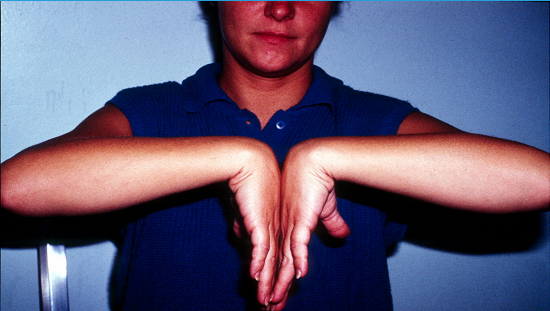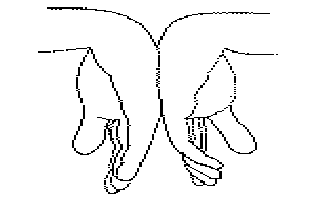
Hammer toes come in all shapes and sizes. Hammer toes can be found to affect one of the toes or all of the toes simultaneously. The name, hammer toe comes from the way the toe hits or hammers on the floor with each step. The primary deformity seen in a hammer toe is found at the PIPJ (proximal interphalangeal joint) which is the first or more proximal of the two joints of the toe. A mallet toe, on the other hand, is a similar deformity but is found in the DIPJ (distal interphalangeal joint). And lastly, claw toes are a deformity where the entire toe grabs and involves the MPJ (metatarsal phalangeal joint) PIPJ and DIPJ. Collectively, these deformities are referred to as hammer toes.
In many instances, patients will have a story regarding how the acquired their hammer toes. Some describe ill fitting shoes as a child while others blame high heels or some trendy shoe craze. While these stories may seem credible, they typically have little to do with the onset of hammer toes. In most cases, hammer toes are caused by the biomechanical properties of your feet and ankles that you inherit from your family.
Treatment Of Hammer Toes
Treatment of hammer toes ranges from simple shoe modifications to sophisticated surgical repair. Logic dictates that our initial attempts at treating hammer toes would include softer and wider shoes. Shoes such as clogs or Birkenstocks offer a wide toe box that in many instances may be enough of a change to allow pain free walking. Hammer toe pads are often used to control the motion of the toe to hold it or bind it in place so that it doesn't rub on the shoe. Many variations of pads are available for use. The right pad really depends upon the individual toe location and problem.
Surgical treatment of hammer toes varies from simple releases of the extensor tendon (top of the toe) to complex tendon transfers and bone fusions and digital implants. The most commonly used hammer toe procedure is that which was described by Post in 1895 and is referred to today as the Post Arthroplasty or Post Procedure. The Post Procedure involves resecting (removing) the knuckle of the toe at the level of the proximal interphalangeal joint (PIPJ) This joint is the joint closest to the point where the toe attaches to the foot. Typically the Post Procedure will be performed in conjunction with a tendon release on the top (extensor surface) of the foot. The combination of these two procedures results in a toe that will lay flatter avoiding direct pressure from the shoe. The Post Procedure may be performed under local or general anesthesia.
In the case of a mallet toe or claw toe, the Post procedure may be performed with or without the tendon lengthening. Typical healing time for hammer toe repair can vary from several days to several weeks depending upon the nature of the procedure and your overall health status.
The following pictures show the surgical steps of a hammer toe procedure called a Post arthroplasty. Modifications of this procedure may include a fusion of the joint, pinning of the toe or digital implant. These photos show dissection at the level of the proximal interphalangeal joint (PIPJ) for correction of a hammer toe. Image 1 shows the pre-operative postition of the hammer toe. Image 2 shows a release of the dorsal capsule and extensors tendons with a #15 blade at the level of the metatarsal phalangeal joint. Image 3 shows the long extensor tendon at the level of the PIPJ. In Image 4, the extensor tendon is reflected and the PIPJ ligaments released from the medial and lateral sides of the PIPJ. Image 5 show resection of the proximal phalangeal head with a pair of bone nippers. In Image 6 we see final closure of the wound.



